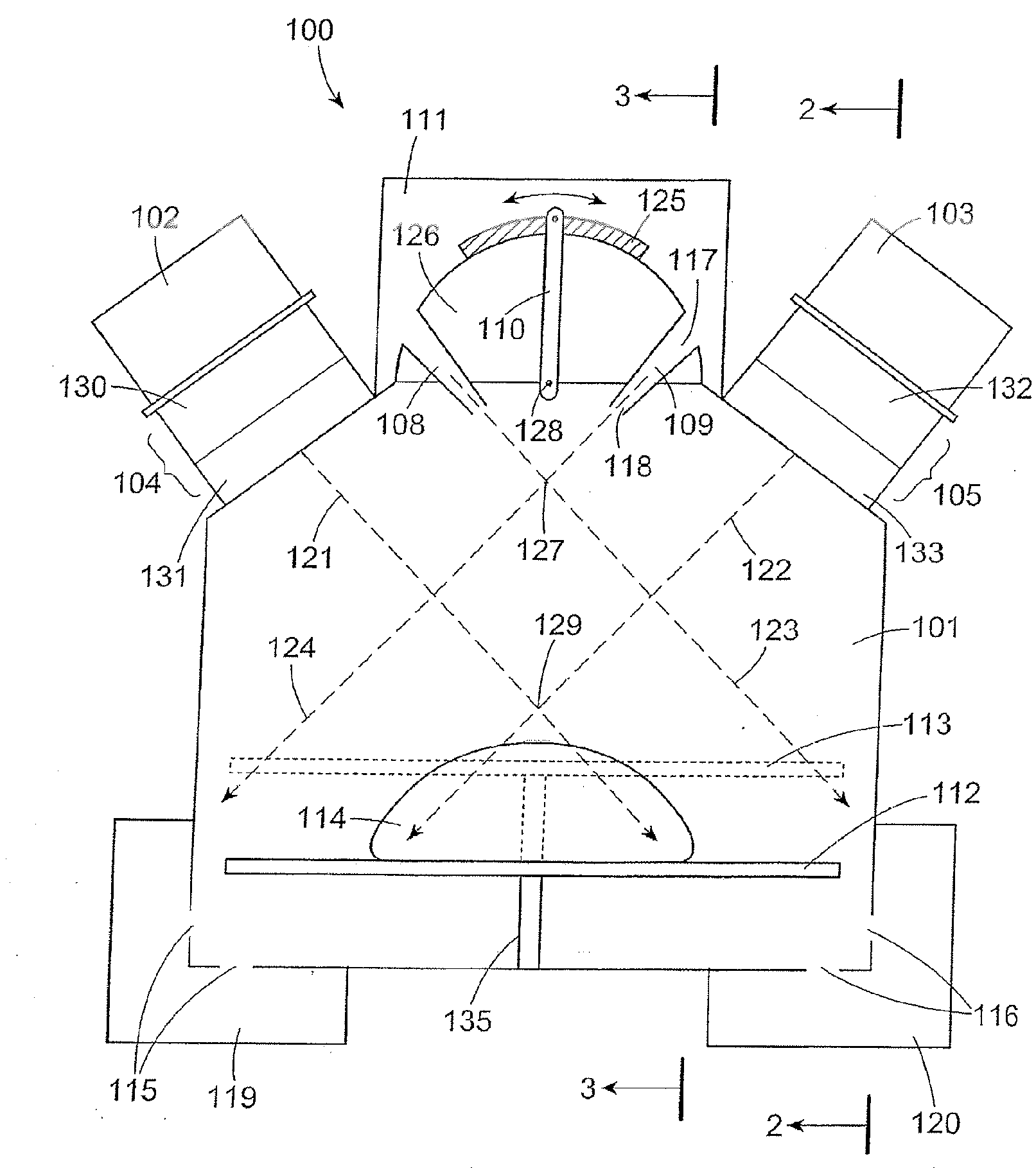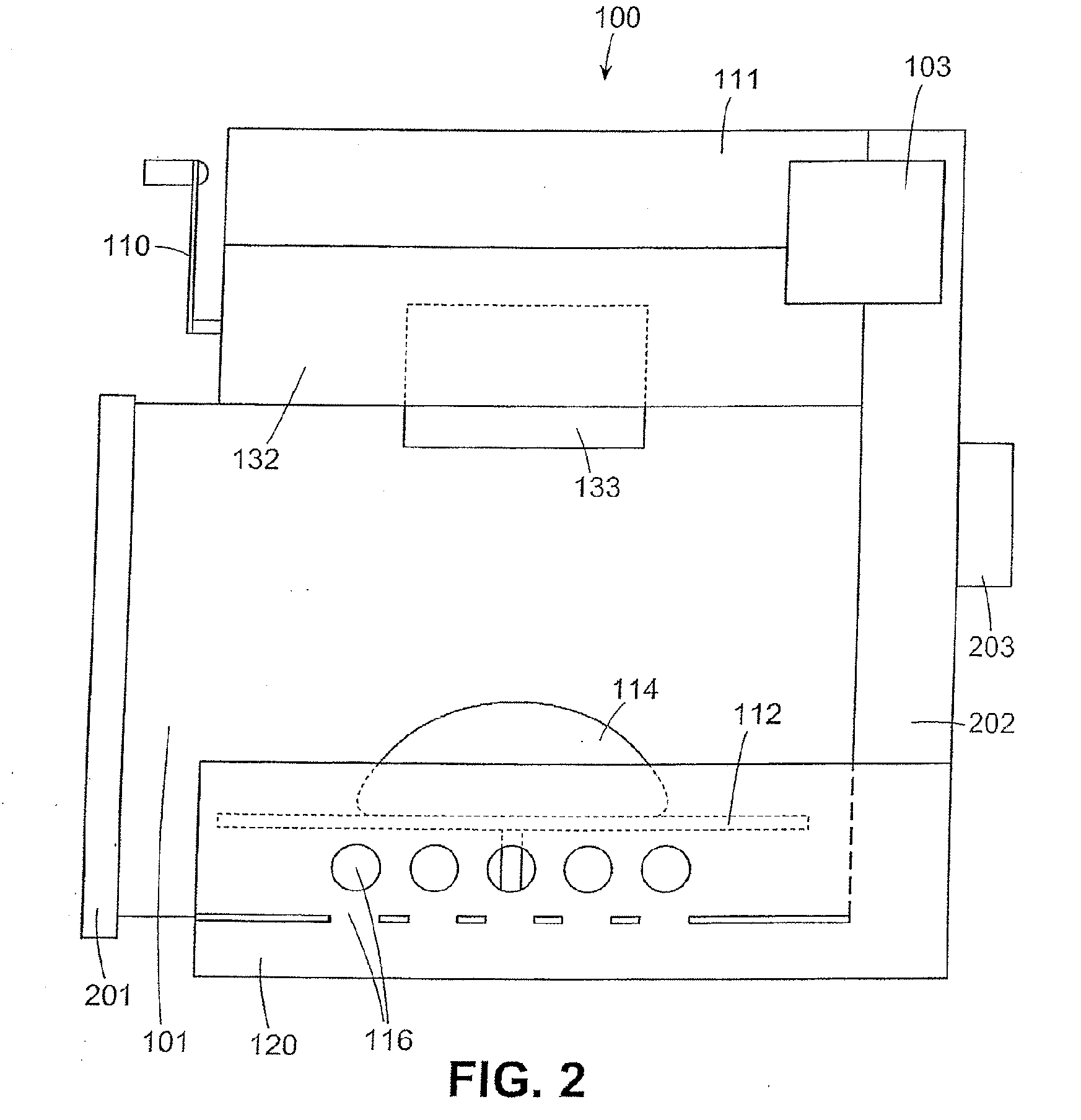High-speed cooking oven with optimized cooking efficiency
a high-speed cooking oven and cooking efficiency technology, applied in the field of ovens, can solve the problems of inefficient energy use, suboptimal cooking efficiency and the inability of high-speed cooking ovens using both hot air impingement and microwave radiation to achieve such optimal cooking efficiency, etc., to achieve the effect of reducing or eliminating some of the inefficiencies in heat transfer
- Summary
- Abstract
- Description
- Claims
- Application Information
AI Technical Summary
Benefits of technology
Problems solved by technology
Method used
Image
Examples
Embodiment Construction
[0194]While the present invention will be described in terms of a stand-alone or counter-top high-speed cooking oven, it will be apparent to those skilled in the art that an oven according to the present invention may alternatively be implemented as a wall unit, a console model having feet adapted to rest on the floor, part of a vending machine, or other variations thereof.
[0195]Referring now to the drawings, in particular to FIGS. 1-3 thereof, therein illustrated is a hybrid oven based on a combination of hot air impingement and microwave according to an exemplary embodiment of the present invention, generally designated by the reference numeral 100. It is first noted that these figures are merely schematic illustrations of an exemplary embodiment of the present invention based on various sectional views and are not intended to reflect the exact dimensions, scales or relative proportions of the oven 100 or components thereof, or the full engineering specification thereof, which sho...
PUM
 Login to View More
Login to View More Abstract
Description
Claims
Application Information
 Login to View More
Login to View More - R&D
- Intellectual Property
- Life Sciences
- Materials
- Tech Scout
- Unparalleled Data Quality
- Higher Quality Content
- 60% Fewer Hallucinations
Browse by: Latest US Patents, China's latest patents, Technical Efficacy Thesaurus, Application Domain, Technology Topic, Popular Technical Reports.
© 2025 PatSnap. All rights reserved.Legal|Privacy policy|Modern Slavery Act Transparency Statement|Sitemap|About US| Contact US: help@patsnap.com



